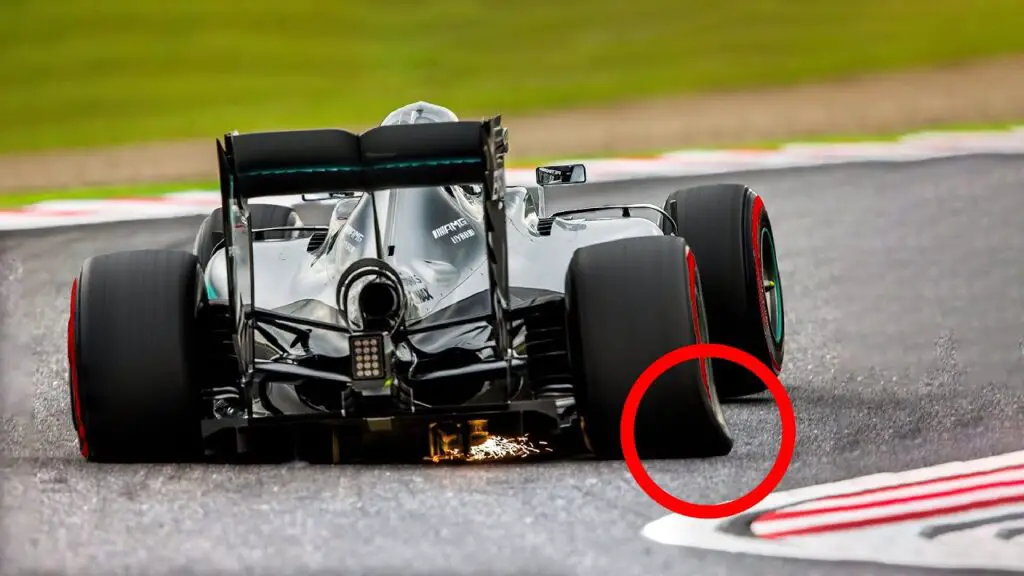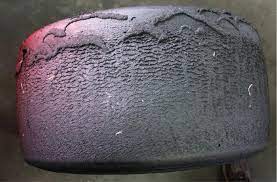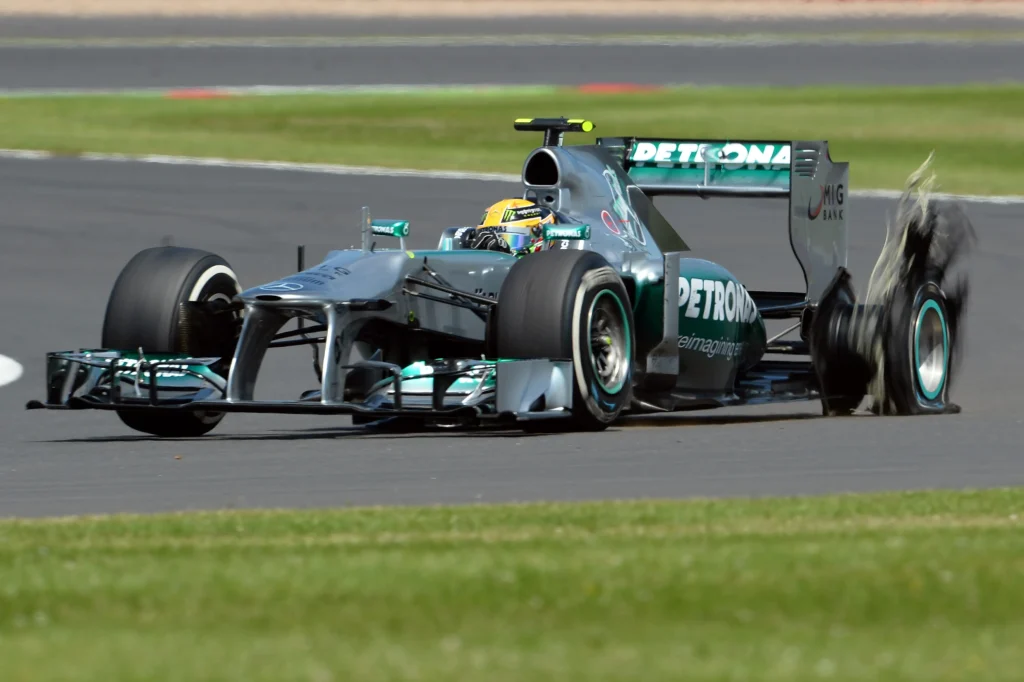Imagine an F1 driver, racing at speeds of over 300 km/h on a track that demands precision and skill. He relies on the car to perform at its best, to respond to your every move, to keep him safe and competitive.
But what if one of the most crucial components of your car, the F1 tire, could suddenly fail ? What if they could lose pressure, overheat, or even explode due to the extreme conditions of the race? This is not a hypothetical scenario. It has happened before, and it could happen again.
That’s why F1 teams use a special gas to fill their tires: dry nitrogen. This gas has several advantages over regular air that make it ideal for high-performance racing.
In this article, we explore the reasons behind this shift and the benefits it brings to the high-stakes world of Formula 1 racing.
Dry Nitrogen Gas Has the Following Benefits Over Air:
The decision to fill F1 tires with dry nitrogen gas stems from a range of advantages it offers over conventional air.
Nitrogen Resists Chemical Reactions
Firstly, nitrogen is an inert gas that resists chemical reactions, making it less prone to oxidation and degradation. This ensures that the tire’s internal components remain intact, resulting in improved overall tire longevity.
Nitrogen Maintains a Consistent Pressure
Secondly, nitrogen-filled tires maintain consistent pressure over a more extended period.
Unlike air-filled tires, which can experience pressure fluctuations due to the presence of moisture and other contaminants, nitrogen provides a stable environment within the tire. It reduces the need for frequent pressure adjustments.
Nitrogen Eliminates Moisture In The An F1 Tire
Thirdly, dry nitrogen gas eliminates the presence of moisture inside the tire.
Moisture can lead to variations in pressure and temperature, affecting tire performance. By removing moisture, nitrogen ensures a more predictable and reliable tire behavior throughout the race.
The An F1 Tire Is Subject to Massive Forces

Formula 1 tires experience incredible forces during a race. The rapid acceleration, abrupt deceleration, and high-speed cornering place immense stress on the tires.
The use of dry nitrogen gas helps mitigate some of these forces by maintaining consistent pressure and stability, ensuring optimal grip and handling characteristics.
The F1 Tire Is Subject to Incredible Heat

In the scorching environment of Formula 1 racing, tire temperatures can skyrocket due to the intense friction between the rubber and the track surface.
Dry nitrogen gas, being an inert gas, dissipates heat more efficiently than air. This property prevents excessive heat buildup in the tires, reducing the risk of tire degradation and blowouts, thereby enhancing safety and performance.
The F1 Tire Has to Cope with Different Circuit Surfaces
Formula 1 races take place on various circuits with diverse surfaces, ranging from smooth and grippy asphalt to abrasive and bumpy tracks.
Filling the tires with dry nitrogen gas helps maintain optimal tire pressure, which is crucial for achieving the desired grip level on different surfaces.
The consistent pressure offered by nitrogen-filled tires allows drivers to extract maximum performance and reduced wear from their tires, irrespective of the circuit’s characteristics.
F1 Tire Wear Has to Be Managed by the Drivers
Managing tire wear is a key aspect of a successful Formula 1 race strategy.
Drivers must balance their speed and aggression with tire conservation to maintain optimal performance throughout the race.
Nitrogen-filled tires provide more predictable wear patterns, enabling drivers to make informed decisions about their tire management strategies.
This knowledge helps them adapt their driving style and make timely pit stops for fresh tires, maximizing their chances of victory.
Examples in the Past An F1 Tire Has Failed

Despite the advancements in tire technology, tire failures have occurred in Formula 1 races, leading to unpredictable outcomes.
Memorable incidents include high-profile blowouts like
- Romain Grosjean’s tire failure at the 2020 British Grand Prix
- Sebastian Vettel’s tire blowout during the 2015 Belgian Grand Prix.
- The 2020 British Grand Prix where Lewis Hamilton’s won the race on three wheels because he lost the 4th when the tire blew out.
- Valtteri Bottas in the other Mercedes and Carlos Sainz suffered tire failures in the same race.
- Lance Stroll crashed on lap 30 of the 2021 Azerbaijan Grand Prix. His car suffered a blowout near the pit entry and spun violently into the wall.
- Max Verstappen was leading and suffered the same issue with 5 laps left. He “speared” into the wall and his race was over.
While tire failures can happen due to various factors, using dry nitrogen gas minimizes the risk by providing a more stable and controlled tire environment.
Conclusion
In the ever-evolving world of Formula 1, the use of dry nitrogen gas to fill tires has become a standard practice for teams aiming for optimal performance and safety. With its benefits of stability, consistent pressure, efficient heat dissipation
Read More About F1 tires in the following article – link

